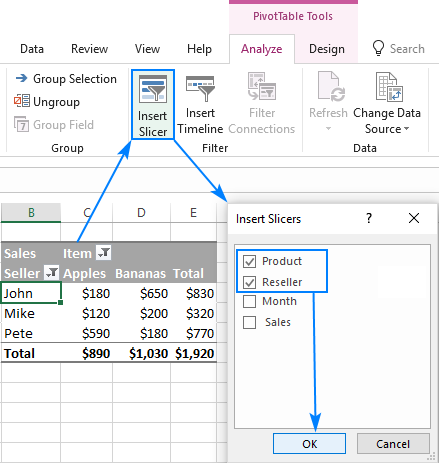

- #Office mac 2016 creating slicers for a table movie#
- #Office mac 2016 creating slicers for a table update#
- #Office mac 2016 creating slicers for a table free#
#Office mac 2016 creating slicers for a table free#
Note that slicers are highly customizable – you can control the specific height and width of buttons, along with the styles, individual highlights of buttons, and even more advanced things like hiding buttons that have no data – feel free to play around with the different options and settings dialogs you can find from that ribbon. And while you’re at it, go ahead and apply a light orange style so it better matches our table (in fact, do this with all your slicers). Now on the Buttons chunk of the Options tab of the Slicer Tools ribbon, go ahead and set it to 4 columns.
#Office mac 2016 creating slicers for a table movie#
Move the Rating and Made into Movie slicers to the top of the table and make it smaller and wider (you can use the grab handles to easily control the sizing). Let’s customize the slicers and make the report look a little nicer, and show of some of the other slicer capabilities along the way. Go ahead and click the Clear Filter icon on the top right of your slicers so you can see the whole table again.
#Office mac 2016 creating slicers for a table update#
People don’t even need to see your table – as you use the slicers you’ll see your chart update in real time. No problem – add your slicers on the table columns you want, and then just put the slicers next to your chart. For instance, you may create a chart based off your table and just want to show the chart.

That’s because under the covers they work the same way. The table column filter buttons show the same “filtered state” as the slicers.Here are a few things to note as you filter: Go ahead and click the slicer buttons and watch your table filter – try finding books by your favorite author, by the type of monster you like, etc. You’ll now have some basic slicers that you can use to filter the table. Go ahead and drag them all next to the left side of the table. That will create the slicers and drop them in your workbook. For this example, let’s go ahead and select the checkboxes for the following columns: Author, Rating, Type, and Made into Movie. Each slicer filters a single column of data and you can create slicers on any column you like. Now you’ll get a dialog asking you which columns you want to create slicers for. Let’s get some slicers inserted! The first thing to do is to select the table (any cell in the table will do), and then click the Insert Slicers button from the Design tab of the Table Tools ribbon. Here’s the starting table of data (brought to you via embedding this table with Excel Web App): But let’s see how much better the experience could be if we added some slicers. For this example data set, since it is so small, that would probably work fine. When deciding which books you might want to read, you could use the existing filter drop downs on the table columns and peck your way through. Since Halloween is coming up soon, I’ve whipped up a small data set showing some great Horror novels to help you get into a spooky mood. We’ve taken the goodness of slicers but moved it beyond just PivotTables – with Excel 2013 you can now create slicers on any table! And, as you’ll see in throughout this article, all of this works in a browser too using Excel Web App. Slicers were first introduced in Excel 2010 and made filtering PivotTables as simple as clicking a button. This blog post is brought to you by John Campbell, Lead Program Manager for the Excel Web App team.


 0 kommentar(er)
0 kommentar(er)
